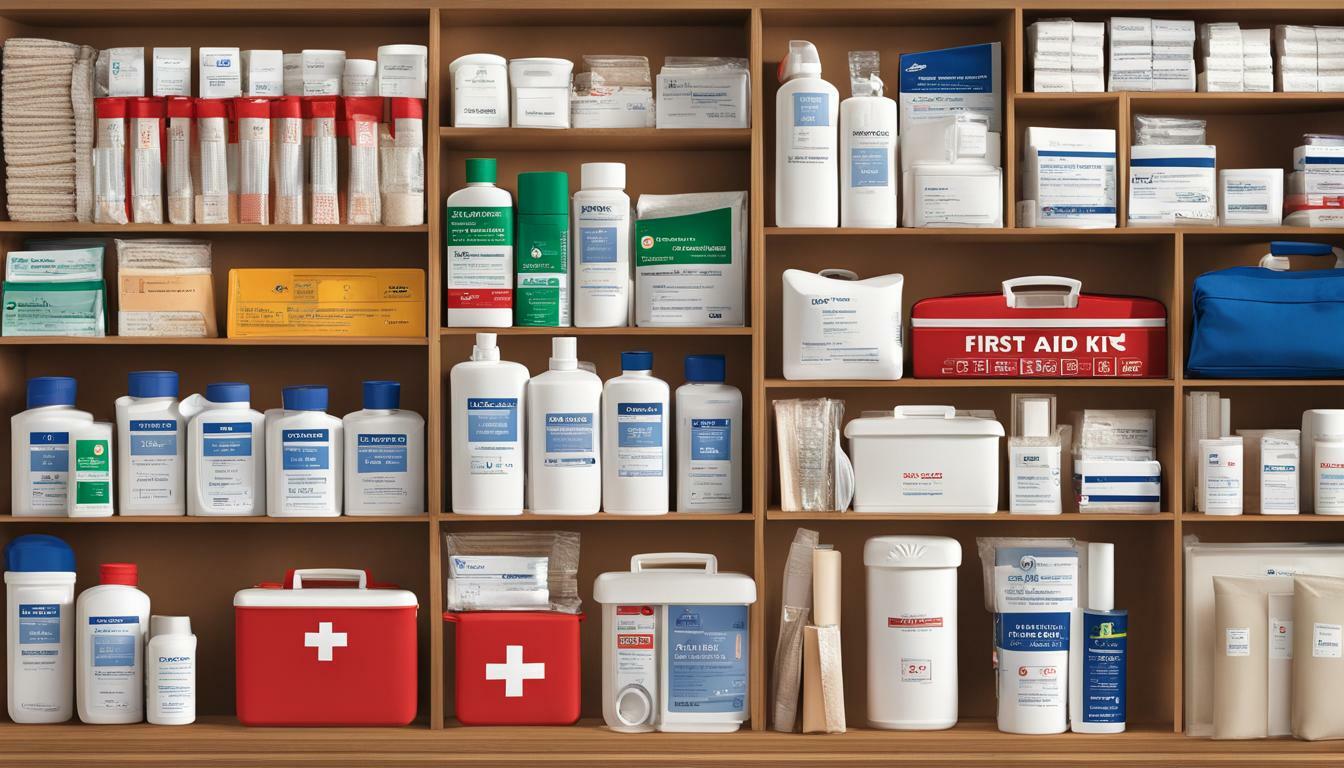First aid kits are essential for addressing emergencies in various settings. Whether you’re at home, on the road, or engaging in outdoor activities, having the right first aid supplies can mean the difference between life and death. But with so many different types of first aid kits available, how do you choose the right one for your needs?
In this comprehensive guide, we will explore the various types of first aid kits available, discuss the options you have when choosing a kit, and provide essential information on selecting the right first aid gear to meet your specific needs. Read on to learn how to choose the right first aid kit for you.
Key Takeaways:
- To choose the right first aid kit, it’s important to understand the different types available.
- Assess your specific needs to determine the appropriate size, contents, and level of first aid supplies required.
- Regularly check and restock your kit, and invest in first aid training to equip yourself with the knowledge and skills to effectively respond to emergencies.
Understanding the Different Types of First Aid Kits
Choosing the right first aid kit can be overwhelming, especially with the many types of first aid kits available. To make the right choice, it’s essential to understand the different types of first aid kits and their contents. Generally, there are three types of first aid kits: basic, specialized, and advanced. Each type is tailored to address specific emergencies or injuries and has its own set of contents.
Basic First Aid Kits
Basic first aid kits are designed for general use and are ideal for everyday emergencies, such as minor cuts, burns, and sprains. They contain essential first aid supplies, such as adhesive bandages, gauze pads, adhesive tape, scissors, and disposable gloves. Basic first aid kits are suitable for homes, offices, and cars and are lightweight and easy to carry.
Specialized First Aid Kits
If you engage in specific activities or work in certain environments, you may need a specialized first aid kit. Specialized first aid kits are designed to address the specific risks associated with those activities or environments. For instance, if you enjoy hiking or camping, a wilderness first aid kit that includes supplies for treating insect bites or snake bites may be more suitable. Similarly, there are first aid kits designed for sports, travel, and marine activities.
Advanced First Aid Kits
Professionals such as paramedics, lifeguards, or remote healthcare workers require advanced first aid kits that can handle more serious injuries and emergencies. Advanced first aid kits contain additional medical supplies such as splints, tourniquets, CPR masks, and emergency medications. These kits are ideal for workplaces, such as construction sites, or for use in remote or austere environments.
Choosing the right type of first aid kit will ensure that you have the necessary supplies to handle emergencies in various settings and situations.
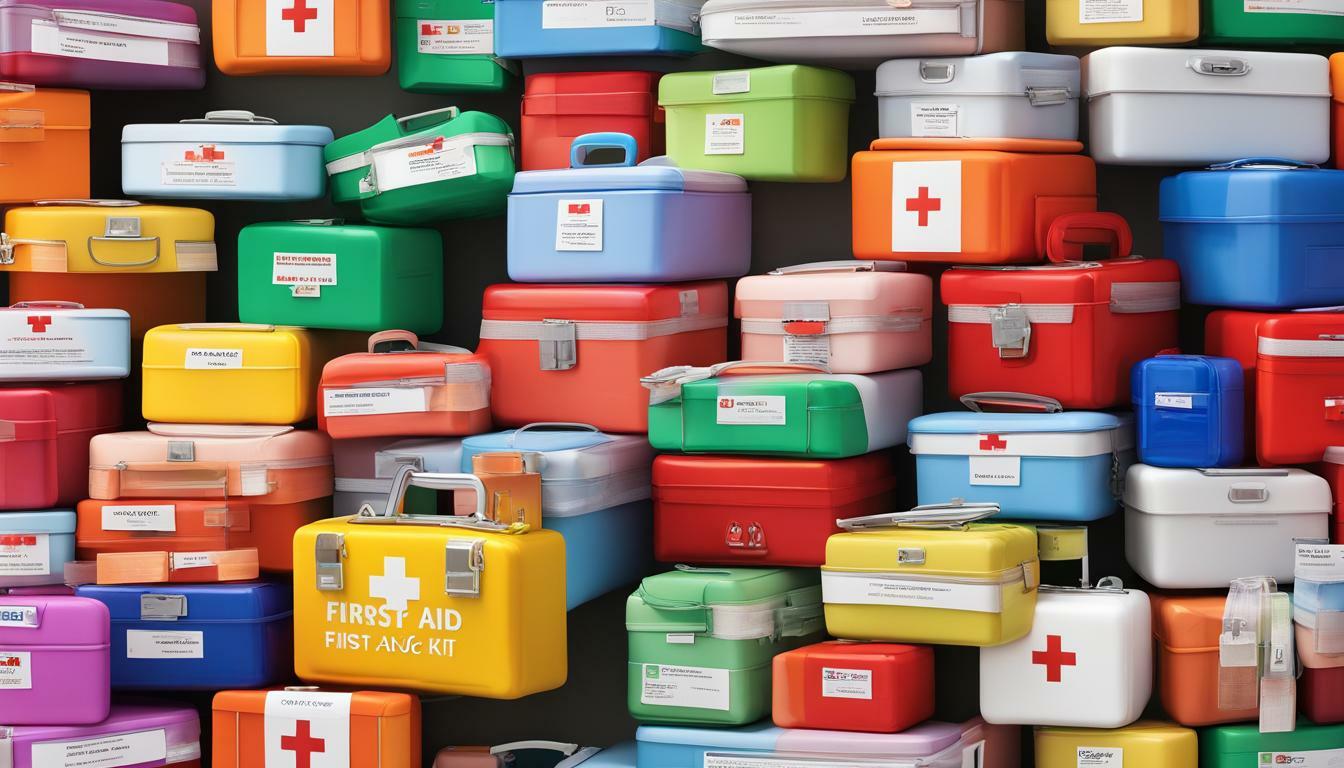
Assessing Your Needs: Determining the Right First Aid Kit for You
Choosing the right first aid kit is crucial to ensure that you have the necessary supplies to handle emergencies effectively. There are various types of first aid kits available, each designed to address specific situations. When assessing your needs, consider the purpose of the kit and the potential risks you may encounter.
First aid kits come in different sizes and with various supplies, so it’s essential to choose one that meets your specific needs. Think about the number of people the kit should cater to, and what activities you are likely to engage in. Kits designed for outdoor activities such as hiking or camping may have additional items for treating insect bites, while those designed for home use may have more supplies for managing cuts and burns.
Additionally, you must consider the level of your first aid expertise. If you have completed a first aid course, and feel confident in your abilities, then a more advanced kit may be suitable for you. On the other hand, if you have never had any first aid training, a basic kit may be more appropriate.
It’s also important to consider the environment in which the kit will be used. For example, if you live in an area with high humidity, it’s important to choose a kit with waterproof packaging to protect the contents from moisture.
Overall, choosing the right first aid kit requires assessing your specific needs and finding a kit that meets those requirements. By doing so, you can ensure that you have the necessary supplies to handle emergencies effectively and protect yourself and others in potentially dangerous situations.
“Choosing the right first aid kit is crucial to ensure that you have the necessary supplies to handle emergencies effectively.”
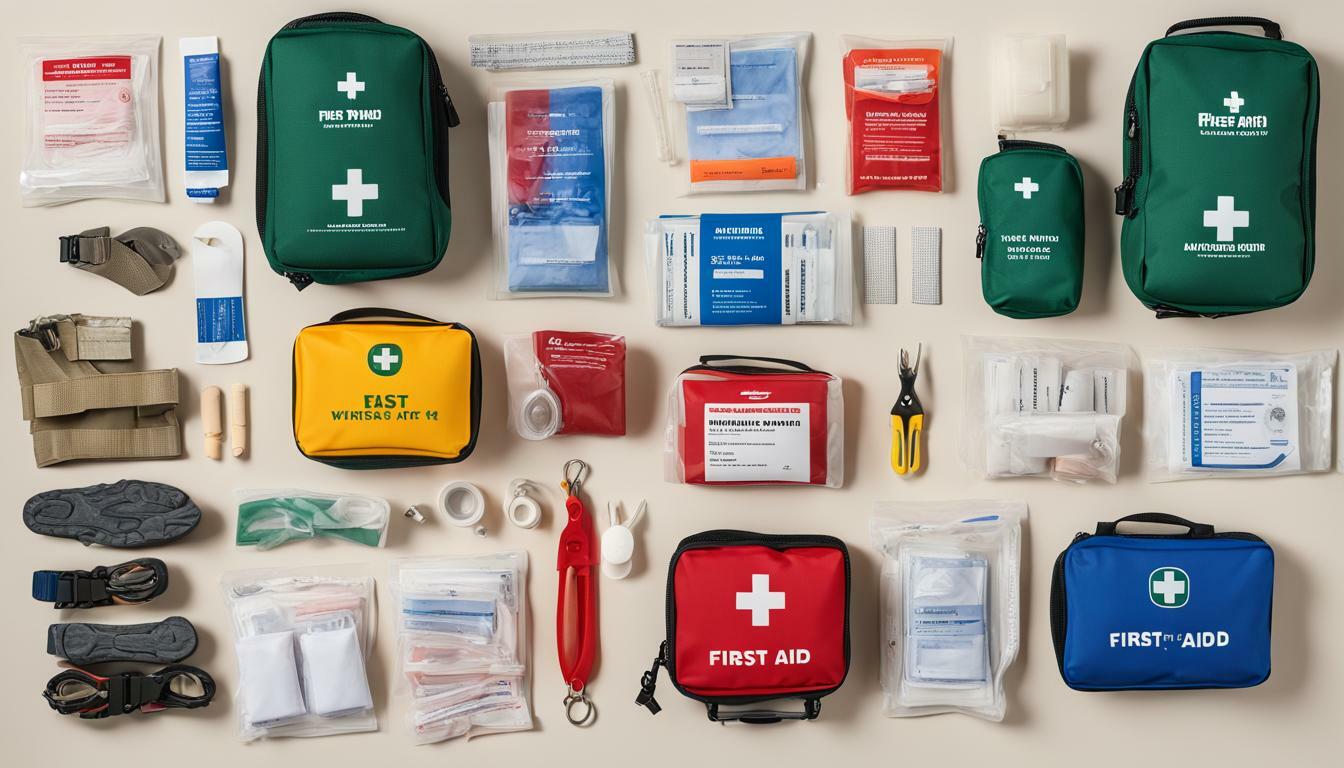
Basic First Aid Kit Essentials
When choosing a first aid kit, it’s essential to ensure that it includes the essential first aid supplies required to manage common injuries such as cuts, burns, sprains, and minor wounds. These items form the foundation of any first aid kit and can be supplemented with additional supplies based on your specific needs.
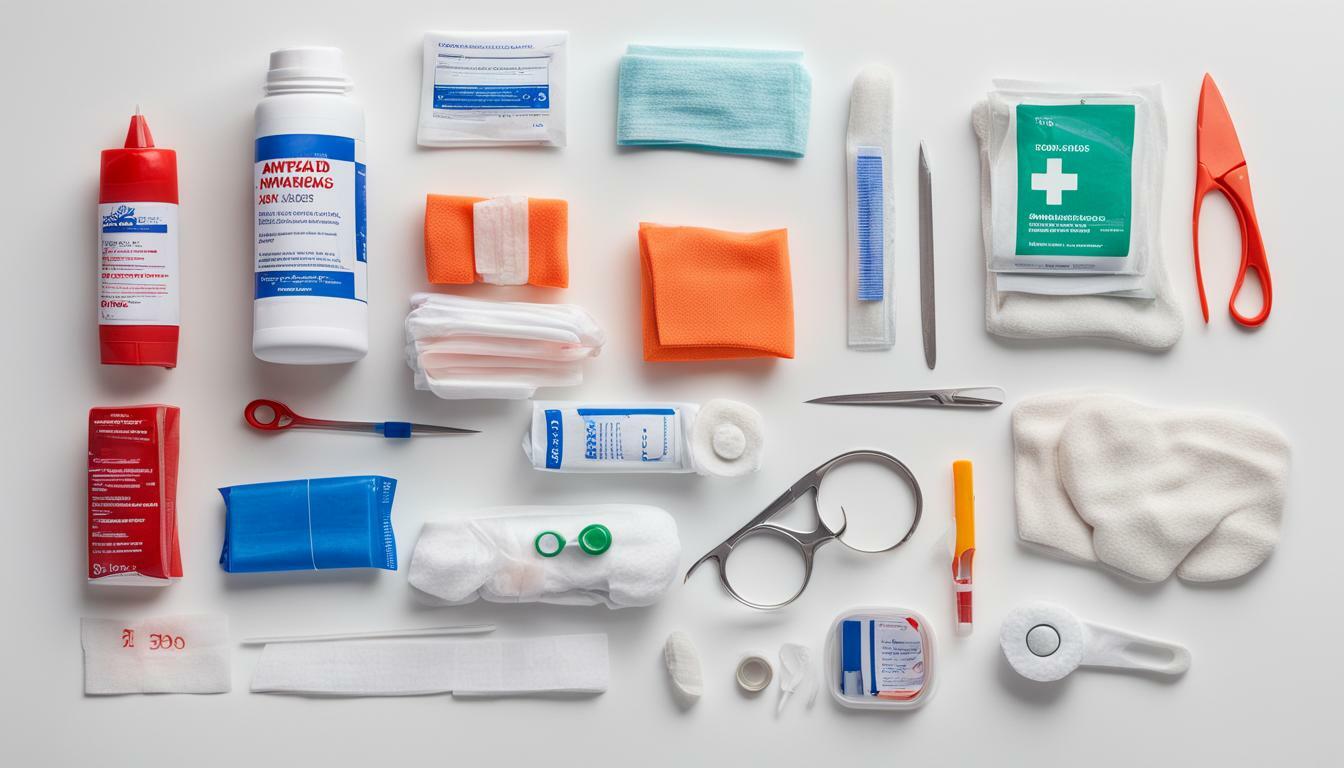
| Item | Description |
|---|---|
| Adhesive bandages | Various sizes and shapes to cover cuts, scrapes, and blisters |
| Antiseptic wipes | To clean wounds and prevent infection |
| Gauze pads | To cover larger cuts and wounds |
| Adhesive tape | To secure gauze or bandages |
| Scissors | To cut tape, clothing, and bandages |
| Tweezers | To remove splinters, debris, or ticks |
| Disposable gloves | To protect both the responder and the patient from cross-contamination |
Having these basic supplies easily accessible in a first aid kit can help you provide prompt and effective care for minor injuries. They are suitable for general use and are a good starting point in building your own customized first aid kit.
Specialized First Aid Kits for Specific Activities
Depending on the activities you engage in, there are various kinds of first aid kits available. A wilderness first aid kit is ideal for those who frequently participate in outdoor activities such as hiking or camping. This kit includes supplies for treating insect bites, snake bites, or outdoor injuries.
If you’re an athlete or sports enthusiast, consider a sports first aid kit. This kit contains specialized supplies for treating sports-related injuries such as sprains, strains, and fractures.
If you’re going on a marine expedition, a marine first aid kit may be more suitable for your needs. This kit includes supplies for treating injuries or emergencies that may arise while at sea, such as seasickness, hypothermia, and jellyfish stings.
There are also travel first aid kits that include items tailored to address potential medical issues during travel, such as motion sickness medication, antacids, and anti-diarrheal medication.
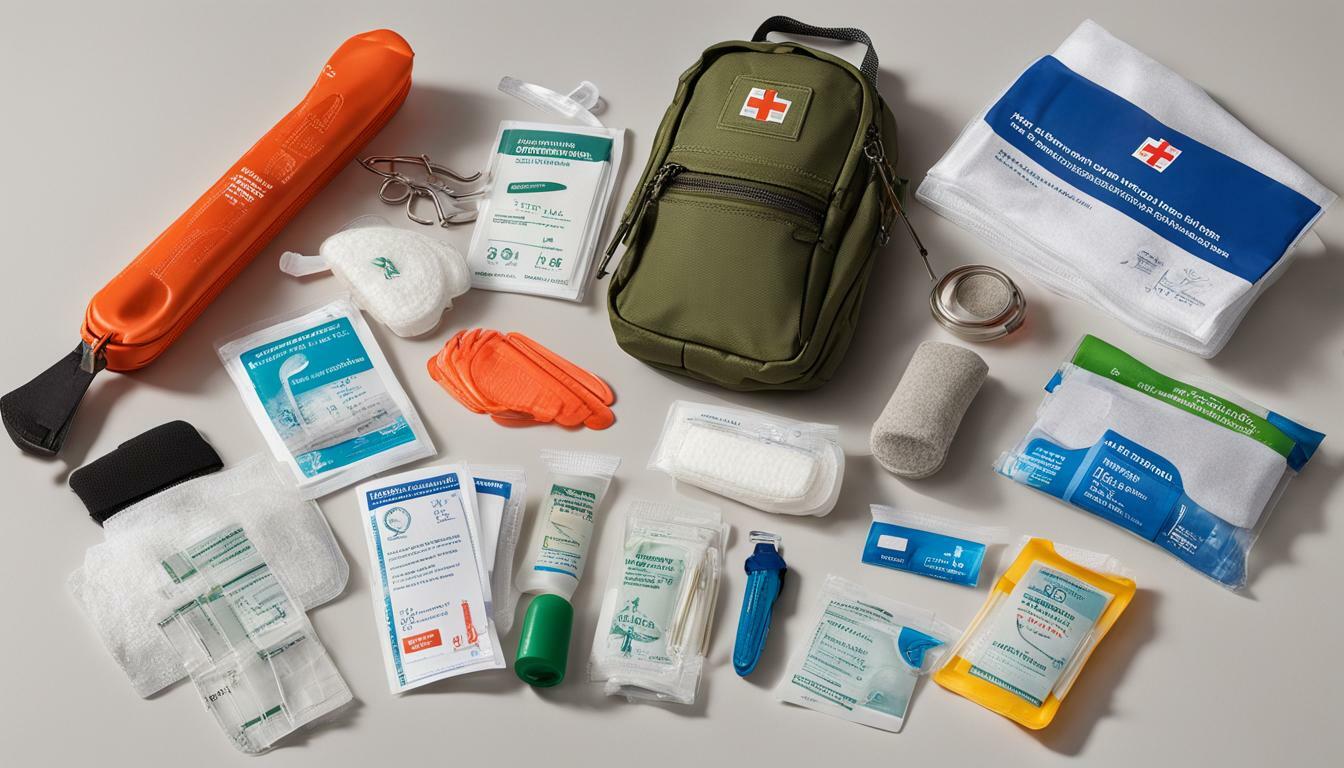
When choosing a specialized first aid kit, consider the activities you engage in, the potential risks, and the environment you will be in. Having the right kit can make all the difference in responding to emergencies, quickly and effectively.
Advanced First Aid Kits for Professional Use
Professionals such as paramedics, lifeguards, or remote healthcare workers require advanced first aid kits that can handle more serious injuries and emergencies. These kits often include additional medical supplies such as splints, tourniquets, CPR masks, and emergency medications. If you work in a profession that requires a higher level of first aid expertise, it’s essential to invest in an advanced kit that meets the specific standards and regulations of your field.
Advanced first aid kits come in various sizes and types, depending on their intended use. For instance, paramedics may require a larger kit with advanced airway and breathing supplies, while lifeguards may need a portable kit with waterproof and shock-resistant features. It’s crucial to consider your profession’s specific requirements when choosing an advanced kit.
When selecting an advanced first aid kit, check for certifications and standards. The Health and Safety Executive (HSE) sets specific guidelines for the contents and quality of workplace first aid kits in the UK. Similarly, British Standards Institution (BSI) sets quality standards for first aid kits used in various settings. Ensure that the kit complies with these regulations to ensure its safety and effectiveness in emergencies.

It’s also essential to regularly check and restock your advanced first aid kit. Many professionals undergo regular training to refresh their knowledge of first aid and ensure they are up to date with the latest techniques and procedures. Investing in ongoing training and maintaining your kit’s contents can help you provide the best possible care to those in need.
Considering Size and Portability
When choosing a first aid kit, it’s important to consider the size and portability of the kit. The size of the kit will largely depend on your needs and the number of people it should cater to. If you’re planning to use the kit for outdoor activities such as hiking or camping, you may want to opt for a smaller, more compact kit that can easily fit into a backpack. For home use, a larger kit may be more suitable.
Portability is also an important consideration. You’ll want a kit that is easy to carry with you, regardless of where you go. Look for kits that are lightweight and feature a durable carrying case with a handle or shoulder strap. Some kits come in waterproof bags or cases, which can be particularly useful if you’re planning to use the kit outdoors or in wet environments.
There are various first aid kit options available, so take the time to choose the kit that best suits your specific needs. A well-chosen first aid kit can provide you with the peace of mind of knowing that you are prepared to handle various kinds of emergencies no matter where you are.

Checking Certifications and Standards
When choosing a first aid kit, it’s important to check if it meets certain certifications and standards. Look for kits that comply with regulations set by organisations such as the Health and Safety Executive (HSE) or the British Standards Institution (BSI). These certifications ensure that the kit has been rigorously tested and meets the required quality and safety standards.
| Certification/Standard | Description |
|---|---|
| HSE Approved First Aid Kits | These kits comply with the Health and Safety Executive’s guidelines for the workplace. The content of the kits varies according to the size of the organisation and the level of risk. For example, low-risk workplaces would require a basic first aid kit whereas high-risk workplaces would require a more comprehensive kit. |
| BSI BS 8599-1:2019 Compliant First Aid Kits | These kits comply with British Standard BS 8599-1:2019 and are designed for general use in a low-risk workplace. They are available in three sizes – small, medium and large – and are suitable for organisations with up to 50 employees. |
| BSI BS 8599-2:2014 Compliant First Aid Kits | These kits comply with British Standard BS 8599-2:2014 and are designed for high-risk workplaces or organisations with more than 50 employees. The content of the kits is based on the number of employees and the level of risk. For example, a workplace with up to 25 employees would require a small kit whereas a workplace with 100 or more employees would require a large kit. |
Checking certifications and standards is crucial as it ensures that the first aid kit you choose is fit for purpose and contains all the necessary supplies to effectively respond to emergencies. Additionally, if you’re unsure which kit to choose, consulting with a first aid specialist can help you make an informed decision.
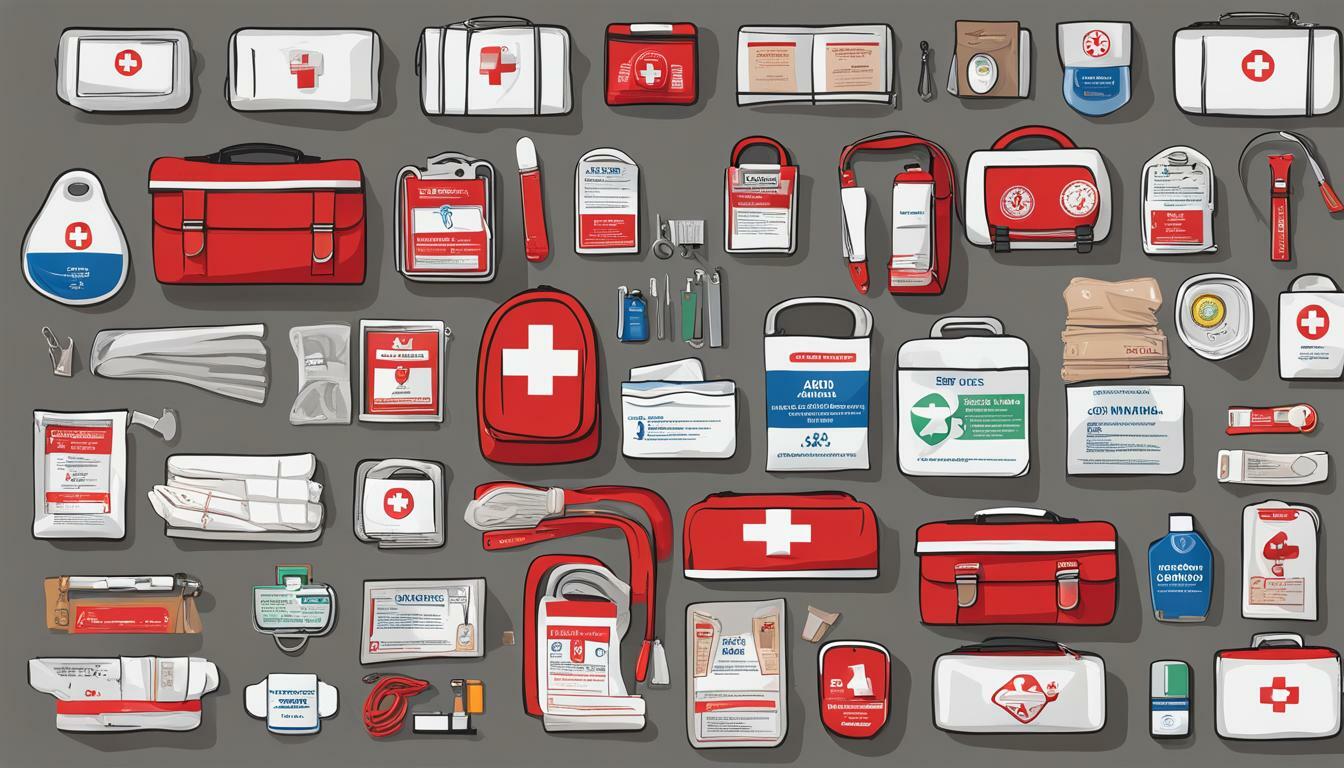
Customizing Your First Aid Kit
To ensure that your first aid kit meets your specific needs, consider customizing it with additional essential first aid supplies. Depending on your activities and environment, you may require items such as a thermometer, cold compress, insect repellent, or medication for pre-existing medical conditions.
Consider the size and purpose of your kit when selecting additional supplies. For outdoor activities, you may want to include a space blanket, whistle, or maps. For home use, you may want to add emergency contact information and a first aid manual.
It’s also important to consider the preferences and needs of individuals who may require first aid. For example, if someone in your household has allergies, add antihistamines to your kit.
Customizing your first aid kit ensures that you have all the necessary supplies to effectively handle emergencies that you are most likely to encounter.
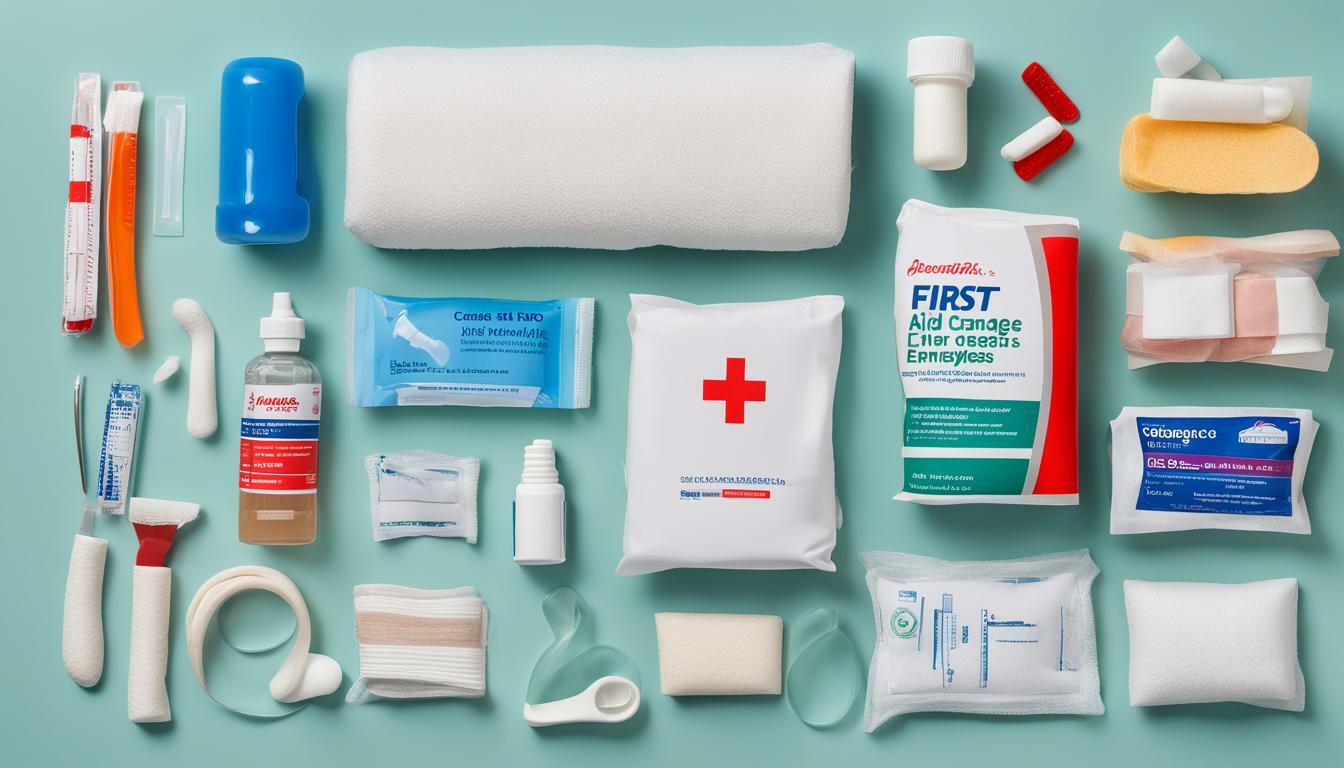
DIY First Aid Kits
If you prefer a more hands-on approach, you can create a customized first aid kit from scratch. Start with a durable container, such as a waterproof, hard-shell case or a lightweight, soft-sided bag. Then, add supplies based on your needs and preferences.
A DIY kit allows you to tailor your supplies to your specific needs and offers more flexibility in terms of size and contents. However, it requires more research and effort to assemble compared to pre-packaged kits.
Regularly Checking and Restocking Your Kit
Once you have assembled your first aid kit, it is important to regularly check and restock it. Over time, some of the items may expire, and others may be used up. By regularly reviewing the contents of your kit, you can ensure that you always have the necessary supplies to handle emergencies.
Check the contents of your kit at least once every three months. Ensure that all items are still present and in good condition. Check expiration dates on medications, ointments, and creams. Replace any items that have expired or those that you have used.
If you have used any items from your kit, be sure to replace them as soon as possible. It is also a good idea to have backup items available, in case you need to use your kit more than once.
Store your first aid kit in a cool, dry place, and keep it away from direct sunlight or moisture. An ideal location could be a cupboard or a drawer in your home, or a designated compartment in your vehicle. Make sure that everyone in your household knows where the kit is stored, so that they can find it quickly in an emergency.
Regular maintenance ensures that your first aid kit is always ready for use in case of an emergency. If you have customized your kit based on your needs, make sure to tailor the restocking process accordingly. By following these tips, you can ensure that you are always prepared with a well-stocked and functional first aid kit.
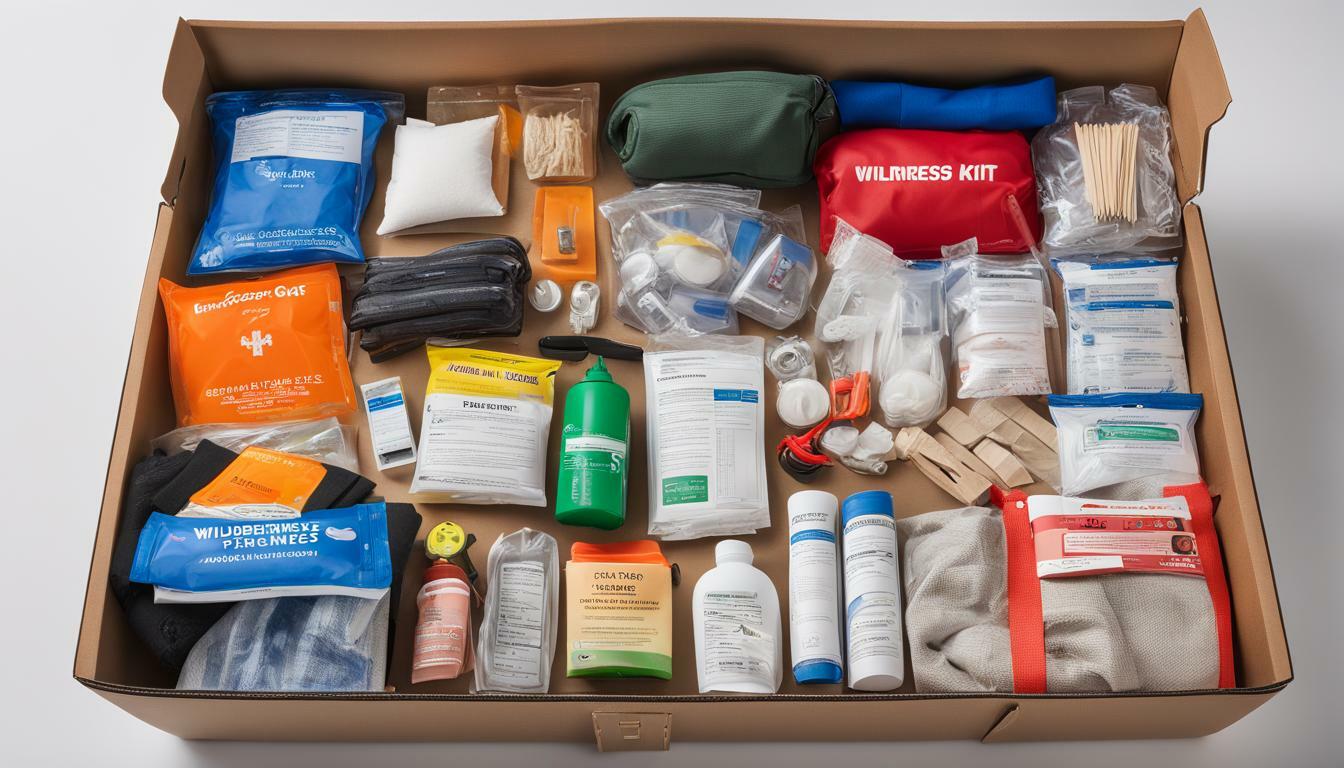
First Aid Training and Refresher Courses
Aside from having the right first aid gear and essential first aid supplies, having the proper knowledge and skills to use them is equally important. Enrolling in a certified first aid training course can equip you with the necessary skills to effectively handle emergency situations. It is essential to undergo regular refresher courses to keep up with the latest practices and techniques, ensuring that you remain equipped to respond confidently.
First aid training courses cover topics such as CPR, choking, wound management, and handling of fractures, burns, and head injuries. These skills are essential in emergency situations, and knowing how to act swiftly and correctly can save lives.
Additionally, undertaking first aid training can increase your confidence when handling emergencies in various settings, providing you with the necessary skills to respond calmly and confidently when faced with a crisis.
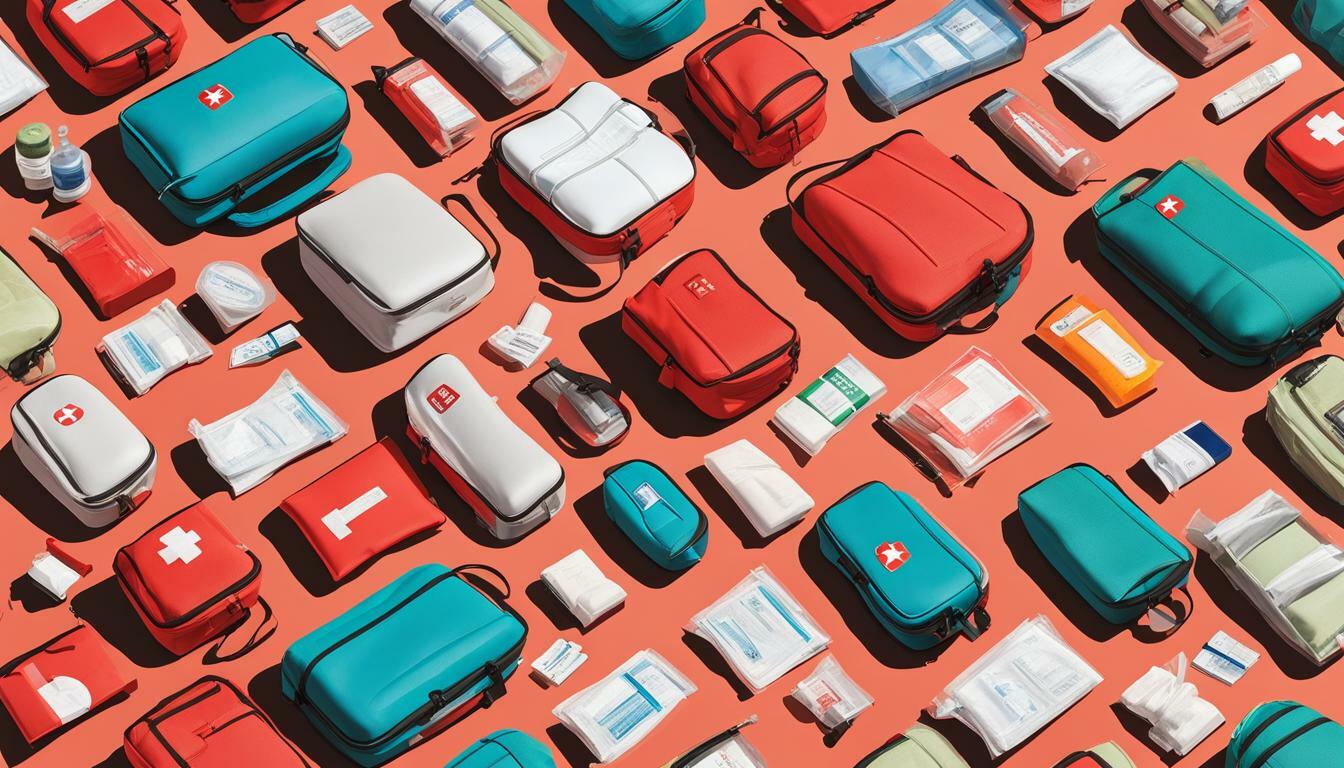
Investing in first aid training is an essential part of being prepared for emergencies. It equips you with the right knowledge and skills to handle different emergency situations, making you more confident and capable.
Conclusion: Choosing the Right First Aid Kit for Your Needs
Choosing the right first aid kit is crucial for keeping yourself and others safe in emergency situations. By understanding the types of first aid kits available and assessing your specific needs, you can select a kit that provides you with the necessary supplies to handle different emergencies.
Consider factors such as the purpose of the kit, the number of people it should cater to, and the potential risks or hazards you may encounter. Depending on your needs, you may require a basic first aid kit for general use, a specialized kit for specific activities or environments, or an advanced kit for professional use.
When choosing a kit, it’s also essential to consider its size and portability, as well as its certifications and standards. Customizing your kit with additional supplies relevant to your activities or environment can further enhance its effectiveness. Once you have assembled your kit, regular checks and restocking, as well as first aid training and refresher courses, can help ensure that you are always prepared to respond effectively to emergencies.
Investing in the right first aid kit and equipping yourself with the necessary knowledge and skills can make all the difference in emergency situations. Keep these tips in mind when selecting and maintaining your first aid kit to help ensure your safety and the safety of others.
